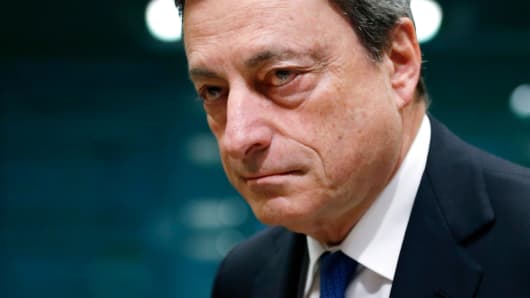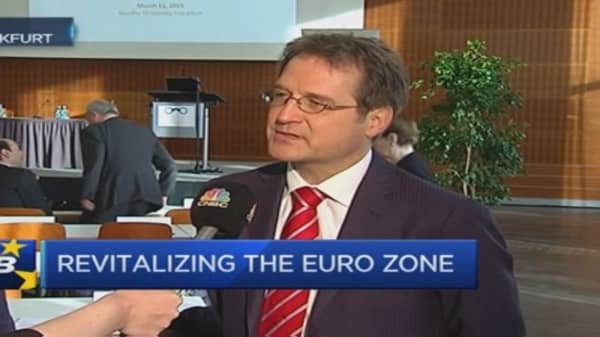The argument runs like this: Bond markets promptly sanction any perception of unsound fiscal policies likely to aggravate budget deficits and public debt, or to violate euro area commitments on deficit and debt targets. Rising bond yields then shrink the value of banks' assets consisting of huge holdings of government bonds. That, in turn, makes banks more risk averse and less inclined to finance consumer spending and business capital outlays.
The upshot is that the entire financial intermediation process – the transmission mechanism of the monetary policy – becomes less efficient or utterly dysfunctional, especially if banks are strictly supervised and expected to pass stringent asset quality and capital adequacy tests.
That is the problem the ECB is facing now. In spite of its virtually free supplies of loanable funds to the banking system, bank lending to the private sector fell slightly last February from the year earlier, but lending to governments continued to grow at a rate of more than 2 percent in the first two months of this year.
Hence the objective of the ECB's asset purchases: Keep euro area bond yields down so that banks' improving balance sheets can stimulate lending to businesses and households to support structural reforms and economic recovery.
It is unfortunate that Draghi's interesting and detailed discussion with Italian parliamentarians got virtually no attention outside the Italian media. His testimony was not even available on the ECB's press service. It almost looked like it was a "confidential" chat with friends Draghi saw the last time in 2009 when he was reporting as the governor of the Bank of Italy.
Investment thoughts
The ECB's expansionary policy is calibrated to serve as (a) a strong offset to restrictive fiscal policies and (b) an effective support to the banking sector's return to its core business of lending to industries and households.
On current evidence of euro area growth (1.3 percent) and inflation (-0.3 percent) developments, the ECB's objective of maintaining its asset purchase programs through September 2016 looks plausible.
Euro area bond market gains have largely run their course. Equities are a better bet in an economy showing signs of a broadening recovery.
Investors, however, should remain vigilant. The continuing excess supply of euro liquidity will keep the exchange rate under downward pressure. That will help exports, but it is also likely to spur costs and prices.
The core inflation rate in February accelerated to 0.7 percent, which means that a 0.3 percent price deflation was caused by collapsing energy prices. Any reversal of energy costs, and a strengthening recovery in an economy which is already growing above its non-inflationary potential, could lead to a rapid revival of inflation pressures and a review of the ECB's policy stance.
Michael Ivanovitch writes about world economy, geopolitics and investment strategy: @msiglobal9






